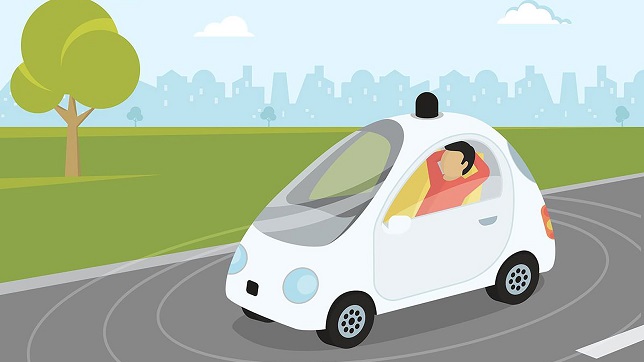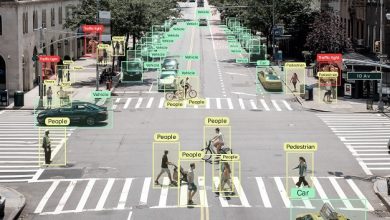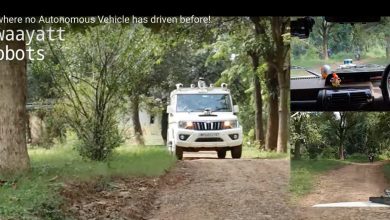Engineering an Ethicist in Autonomous (Vehicle) Beings

Every decade brings about new technology that impacts human life so profoundly that the new generation would not readily comprehend a lifestyle prior to that technology. The thought about a world without mobile phones prior to the ‘90s brings a great deal of wonderment, even to the adults of today, who lived in that era. Sometimes technology creates a new need that we did not know we needed – mobile phones are such.
Fast forward 30 years, and we are in the era where most science fiction of the 70s and 80s is already real, and several of these are at the cusp of mass adoption in the coming decade. Autonomous Beings (Robots, Drones, and Cars) have already arrived and are at the tipping point for mass implementation. If we are lucky enough, most humans alive today will see a day to reflect with immense wonderment that humans used to actually drive cars! The one difference in the birth story of mobile phones and Autonomous Vehicles(AVs), is that AVs have reached a point of overdue necessity that mobile phones did not start off with. This differentiator is the safety of human lives. The auto industry is also in a technological vantage point to enable a solution through AVs for this long due Safety requirement.
AVs are expected to hit the roads in the current decade and become mainstream in the coming decades. The implementation level (SAE Levels) will be staggered and interspersed with timing, depending on the geography, market, infrastructure, and consumer readiness. The accelerated continuous improvement in EV technology, batteries, Semiconductors, Sensors, Connectivity, Mapping, Telematics, Infrastructure management has brought us to a vantage point that implementing AVs at scale is no more a 10-years Vision. We have real Vehicle Development Plans in OEMs that are being executed to fruition, with teasers hitting the public domain every Quarter. We are now not in a stage of debating the relevance or need for AVs. It is a given for most OEMs, with the single benefit of saving lives worth every penny invested in the research and development of AVs. 15% of every vehicle sold by 2030 will be Fully Autonomous.
A low down on AVs will give us an idea that AV implementation involves decision-making on the fly, at the core of its operation. Whenever there is decision-making, it means there are guidelines. There are aspects related to technical, legal, and the not-so-apparent ethical background whenever there are guidelines for decision making.
A skeletal functioning of AVs can be considered so: Sense -> Plan -> Act
Sense: Receive sensor inputs from LiDARs, RADARs, Cameras
Plan: Process the data, decide next action
Act: Execute the planned output in terms of Braking, Acceleration, or Steering, along with ensuring passenger and pedestrian safety
Below is an example of an autonomous/intelligent battle field scenario!

It is the job of technical, ethical, and legal frameworks to dictate the Plan phase, leading to an “acceptable” Act phase.
A quick under-the-hood check would let us know there is a massive amount of data being churned for the AVs to function(to make decisions and act). The data involves maps, live sensor inputs, vehicle-specific position information, and so on. In essence, the Vehicle’s every trip information is not anymore private to the vehicle owner. The decisions made essentially control the Vehicle’s behavior on road. As soon as one realizes this, it becomes evident that an AV needs to be subject to the legal and ethical rigor of any other Artificially Intelligent system and possibly even more due to the safety considerations with zero room for errors.
Any framework evolves with time and enablers maturing-up (technical, social, or others); and needs to be ahead of the times in terms of application. A robust framework has foresight. The downside about frameworks is, they need to convert to a legal binding for them to be effective in their implementation. Engineers and Scientists are typically passionate about technology-related best practices, specifications and great at pouring through research papers published in the past and improve current states of technology. Businesses focus on bringing out a great product and ensuring bottom lines are met. Consumers focus on value for money.
Meeting the ethical needs within technology implementations is then seen as a passive goal. With the increasing implementation of Task-Based AI products(e.g. AVs), the need to bring about stronger ethical definitions for products is imminent. The more “human” the machine is, the more tighter the need for integrating ethical frameworks into the products. Trust, understanding machine intent and their capability is a much needed product feature for a product which relies on AI. Would we want to see virtues in AVs? Would we want to see pro-social behaviours in AVs? Would we want the AVs to handle new situations on the fly? Would we want to extend cultural nuances into AV behaviour (honking or not?!)
Philosophy of Ethics, Technology and Science
The oft-used example to draw attention in this context is by considering the following example scenarios:
- If an AV crashes into a private property – who would you blame? (nobody was driving it!)
- If an AV is in a forced situation of having to crash into a child or a senior citizen, who must it save(and why?) – what might a human have done?
Ethical Foundations deep dive into ethical theories and analyze their basic premise. Moral objectivism and subjectivism become the points of consideration. Moral judgment on what is good, bad, right or wrong follow from detailed evaluation and arguments. We need to analyze what is the current state of affairs from which an aspirational state can be derived.
Ethical studies deal with human values such as sharing, caring, cooperation and commitment. They also deal with human virtues such as honesty, courage, patience, humility, obedience. Ethics is less to do with contemplation and directly linked with outcomes of action.
Laws, rules, regulations, directives, guidelines, dos and don’ts: all of these are built upon the discipline of Ethics. Ethics are here to tell what acts are good and what acts are not good. The desirable state is to have a universal appeal to the definition of good vs bad. Ethical values are complex. Incorporating them into technology is necessary for the betterment of human experience with these technologies. The need for incorporating sound and robust Ethical Frameworks into technology is seen as the need of the hour, as they will have a multiplier effect when deployed into mass-produced AVs.
It is possibly, for the first time in human existence, we are delegating the serving of ethical values through a non-human agent at such a vast scale of consumption. The scale relates to the impact on human lives at scales not operated anytime in history. The Utopian Goal is to reach a state where what is deemed good to one set of humans also means good to “all humans”. The Ethical foundations of technology need to be sound and tested for all scenarios and all cases of consumption. The only manner to control this is through the deployment of a cohesive and parallel framework for Ethics that would guide the working rules for the implementation of technology. In the world of AI, AVs are a direct example where the 5Vs – volume, velocity, variety, veracity, and value have gotten ahead of the Ethics framework, unlike in the past technology revolutions where the 5Vs were well within the prevalent Ethical frameworks of the times. The “handing over” and the scale is unprecedented – thus, the urgency.
“There is no reason and no way that a human mind can keep up with an artificial intelligence machine by 2035.”
—Gray Scott
Ethics in AI is a widely discussed and evolving area as of this writing. Further, AI being applied to mass-impact areas such as Medicine and AVs call for a heightened sense of urgency. Until then, we will continue to depend on current legal frameworks and not go into the nuances that have surfaced in recent times for AI applications at scale. The need of the hour is to have a well accepted, and comprehensive framework for Ethical AI.
“The real question is, when will we draft an artificial intelligence bill of rights? What will that consist of? And who will get to decide that?”
—Gray Scott
A good starting point will be to work with Fundamental Ethics, not having to reinvent them. We need to see what new transactional manifestations with the real world, for Autonomous Vehicles, call for Ethical codification. This task is not easy. This is almost like hopping onto a moving train; being able to keep up with the pace of innovation and implementation.
The desired state is for Autonomous Vehicles to act as Ethical Beings in all they Sense, Process and finally Act. This, just like how humans are expected to function. The decision-making outcomes are invariably a result of Machine Learning / Deep Learning algorithms that perform Sensor Fusion to provide a decision for the Vehicle to Behave and Act. What did we prioritize to reward inside our Neural Networks – just monetary profits or ethical profits too?
What is the crux of the problem?
It is about being able to fit an Ethical Framework up-front followed closely by a legal and regulatory framework leading to a technical specification and almost having to hard code it into the product, so there is less ambiguity in implementation. In the past, our legal and ethical frameworks have mostly worked as Operating Systems – giving much play-space for interpretation. Delivering justice in non-compliance situations was mostly a post-facto exercise based on the merit of the facts presented in the case when there is a failure to meet. We are essentially trying to reduce opportunities for failure and thereby for post-facto addressing in the case of AI implementations. We may, well, be dealing with human lives.
A Possible Solution Journey?
What may be the right way for OEMs and the ecosystem members to adopt into their product development process?
- Educate engineers and technologists on Ethics (think Six-sigma, Design Thinking, or Agile education drives of the last two decades, inside most large companies in every domain – that even brought about new levels of thought leadership and cultural alignments)
- Spend enough time understanding Ethical Frameworks and their implementation – without rushing to the product context
- Bring Philosophy Majors to the mainstream of technology development – not see them as “good to have” members on isolated teams – these members are the link between technological pursuits and human good – get them to provide buy-in for every significant step – especially in an AI world
- We have failed to recognize what is considered as a “significant step” in some of the past implementations – a great reminder that technology does not have a mind of its own, quite literally
- Bring the Ethicists on par with legal teams, which are reasonably well integrated into most product teams already
- Cross-pollinate best practices in this context from beyond the automotive domain (internet, websites, social networks?)
As long as we strive to only just meet legal or technical specifications, we will continue to run the risk of ethical mishaps in the world of AI. We need to think ground up about product definition and their implementation methods using Ethical considerations as checkpoints at various milestones throughout the product development cycle.
Most definitions of AI can be organized into four views:
- Systems that think like humans
- Systems that act like humans
- Systems that think rationally
- Systems that act rationally
Here lies the daunting task of emulating humans through machines. AV development frameworks need to be spun out of current Vehicle Development Processes. These are largely driven by legal and technical specifications that evolved over much of the 20th century. OEMs worked to meet them as minimally necessary conditions to be able to sell the vehicles to make minimal profits. Legal requirements being met, vaguely implied Ethical requirements being met. With the advent of AI into AVs, it becomes imperative to go one step further to look at the Ethical implications of the products that may or may not have binding in today’s legal and regulatory frameworks. We need to get Ethical Frameworks to lead from the front – this is the biggest foresight we could be building our products with.
The ELSI (Ethical, Legal, Social Issues) needs to be seen with fresh eyes for the AVs and any product that heavily depends on data and AI in general. ELSI needs to be understood in demography-based contexts, and OEMs need to consider this for every region of sale, aka Operating Design Domain(ODD) in the AV world.
Removal of unconscious bias from the programmers, ensuring parity in test cases, the security of personal information (connected and shared vehicle deployments), are some of the very basic considerations one can think of. We need Ethics frameworks to address Data, Algorithms, Practices and Implementation related aspects.
I want to leave the reader with a simple shift in perspective, one that is hiding in plain sight. Autonomous Vehicles are not about Vehicles, they are about (automating) the human driver. Anything an AV does is subject to the same level of scrutiny along with legal and ethical examination that a Human Driver would be subject to. Who do we blame when we blame the AV for crashes, data breaches, or other unethical and unwelcome behaviors? That is the most simplified way to understand the urgent need for the right frameworks to come into mainstream product development priorities. We need Governments, Regulators, OEMs, Philosophers, Legal Teams, Parts Vendors, and even Consumers to come together and evolve a playbook. Without this, we will not have Autonomous Ethical (Vehicle) Beings! As far as AVs are concerned, the stakes are more directly perceivable for human lives, social harmony, and future cities.
“Artificial intelligence is at the heart of the epochal change we are experiencing. Robotics can make a better world possible if it is joined to the common good. Indeed, if technological progress increases inequalities, it is not true progress. Future advances should be oriented towards respecting the dignity of the person and of Creation. Let us pray that the progress of robotics and artificial intelligence may always serve humankind . . . we could say, may it “be human”.
Pope Francis, November Prayer Intention, 5 November 2020
Are we going back to ancient times, where Ethics drove scientific explorations? This time around, it will be far more enriching and rewarding!
Author:

Vijai Gopalakrishnan
Delivery Manager
TCS
Mr. Vijai Gopalakrishnan has over 18 years of experience in the automotive industry. Has worked with automotive product development/design under various roles, at General Motors, and is now with TCS-GM Partnership, Bangalore. His areas of work and interests include Electric Vehicles, Autonomous Systems, Data Science, ML, AI. Holds a Bachelor’s Degree in Mechanical Engineering, a Master’s Degree in Psychology and a Master’s Degree in Philosophy.
Published in Telematics Wire



